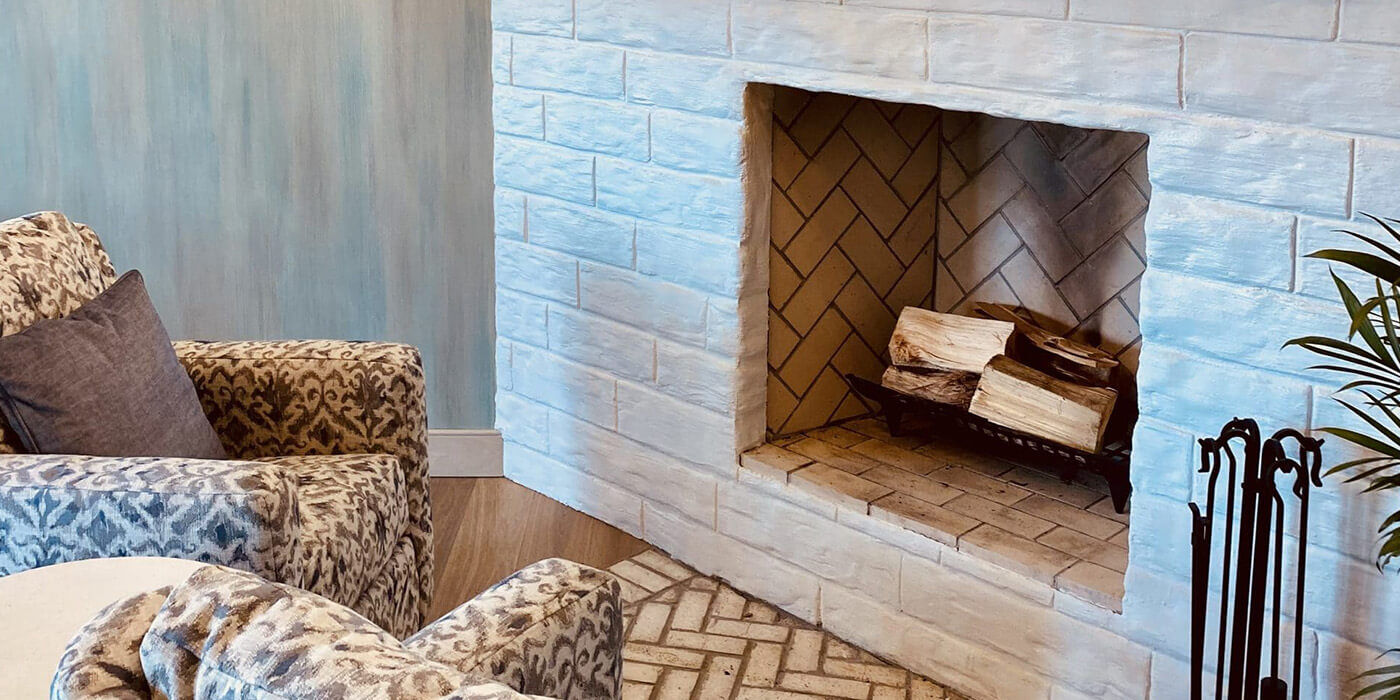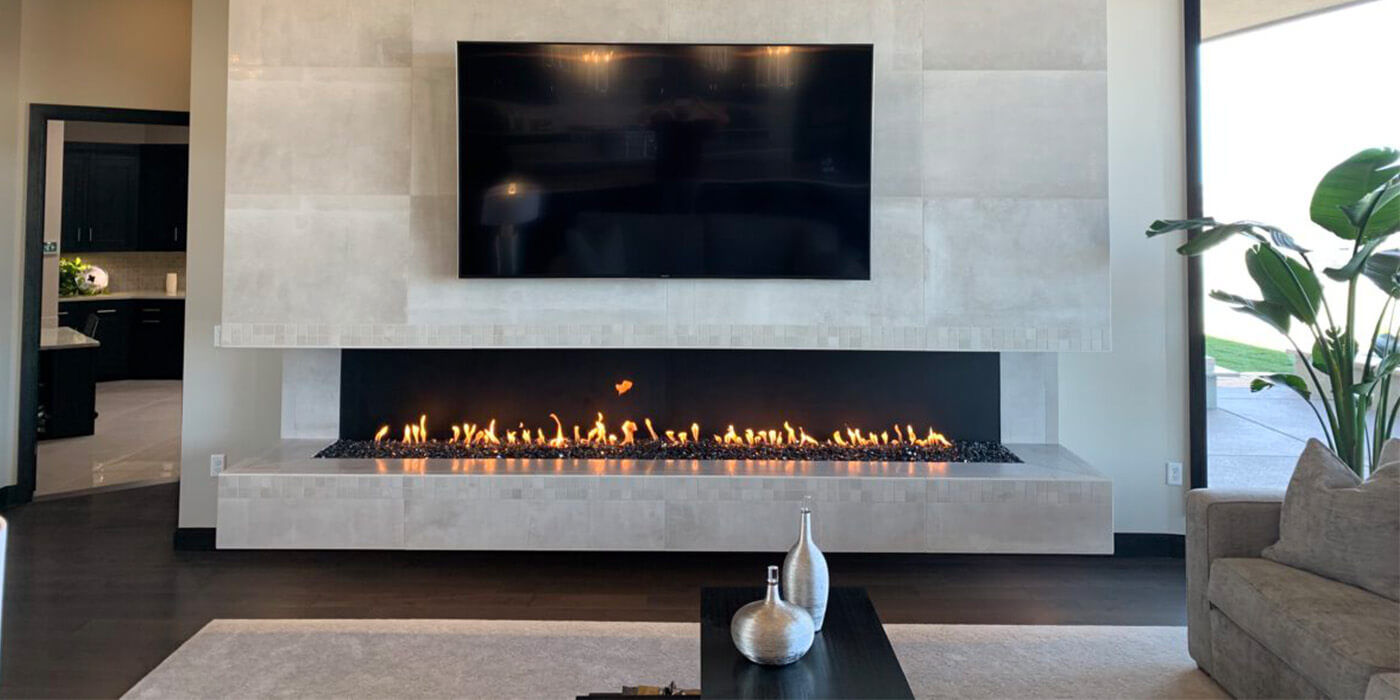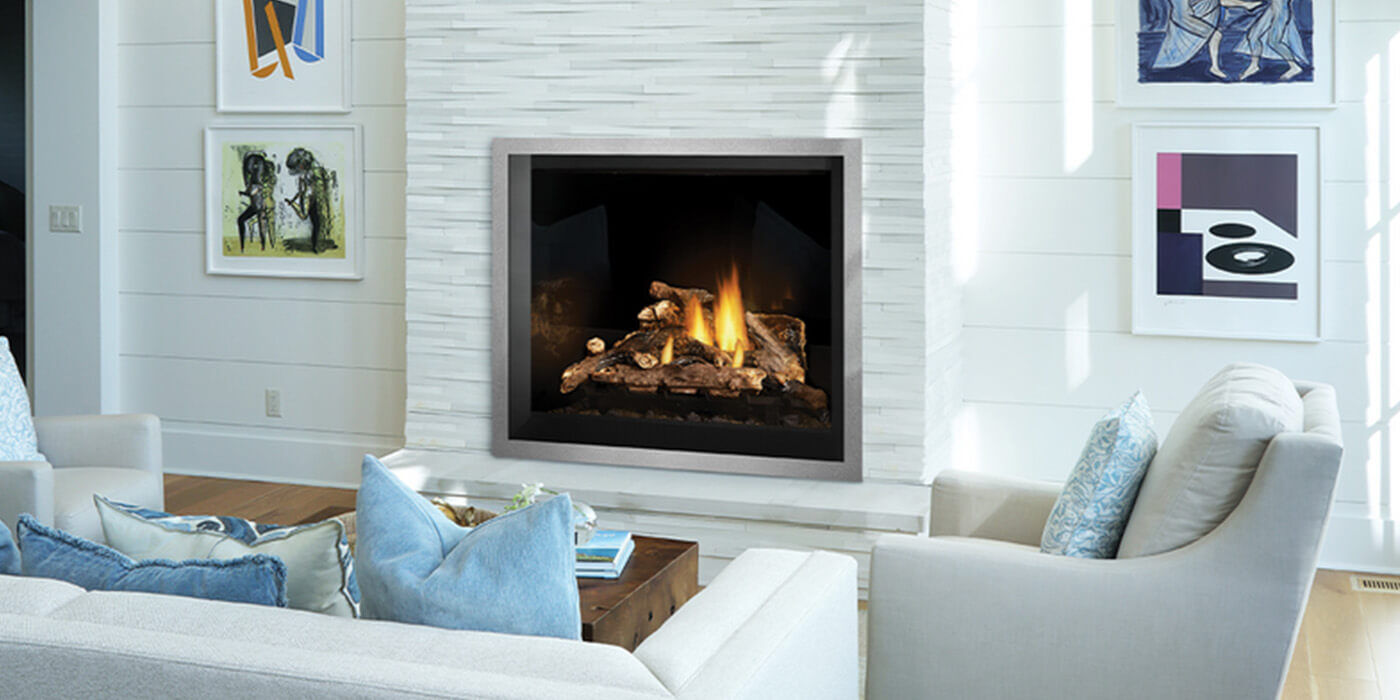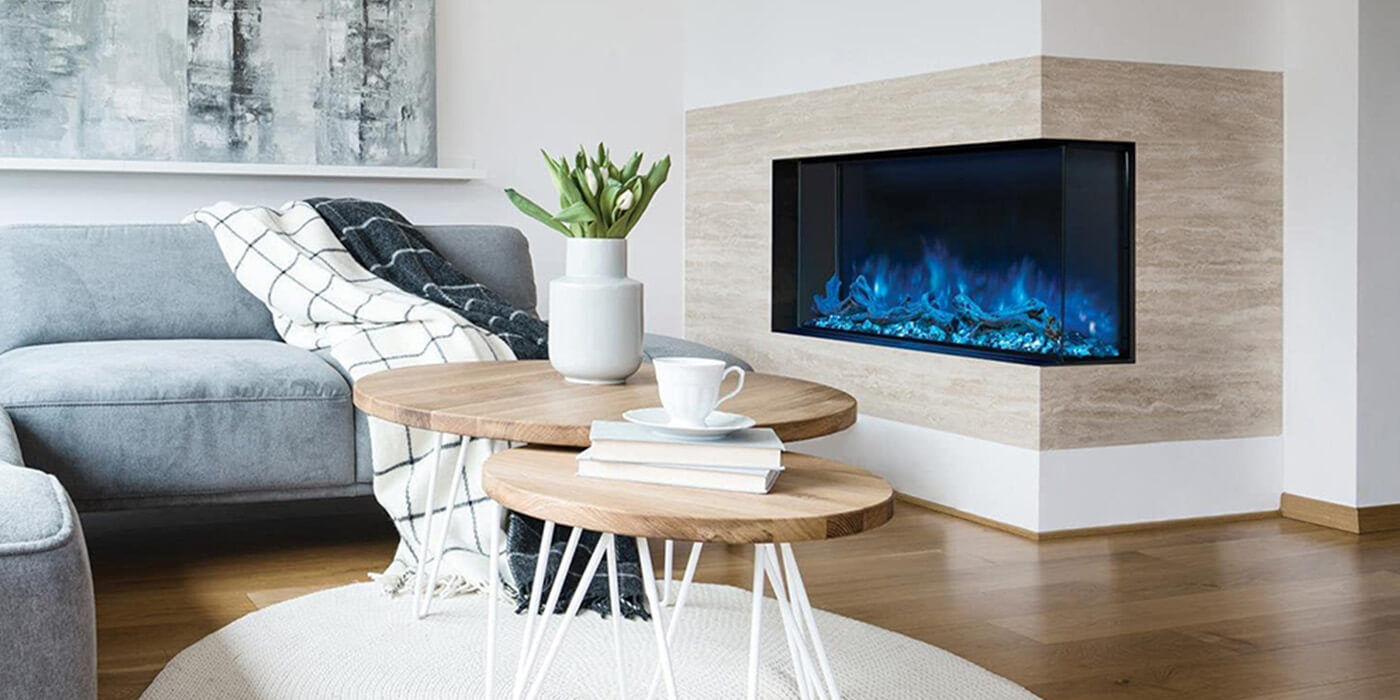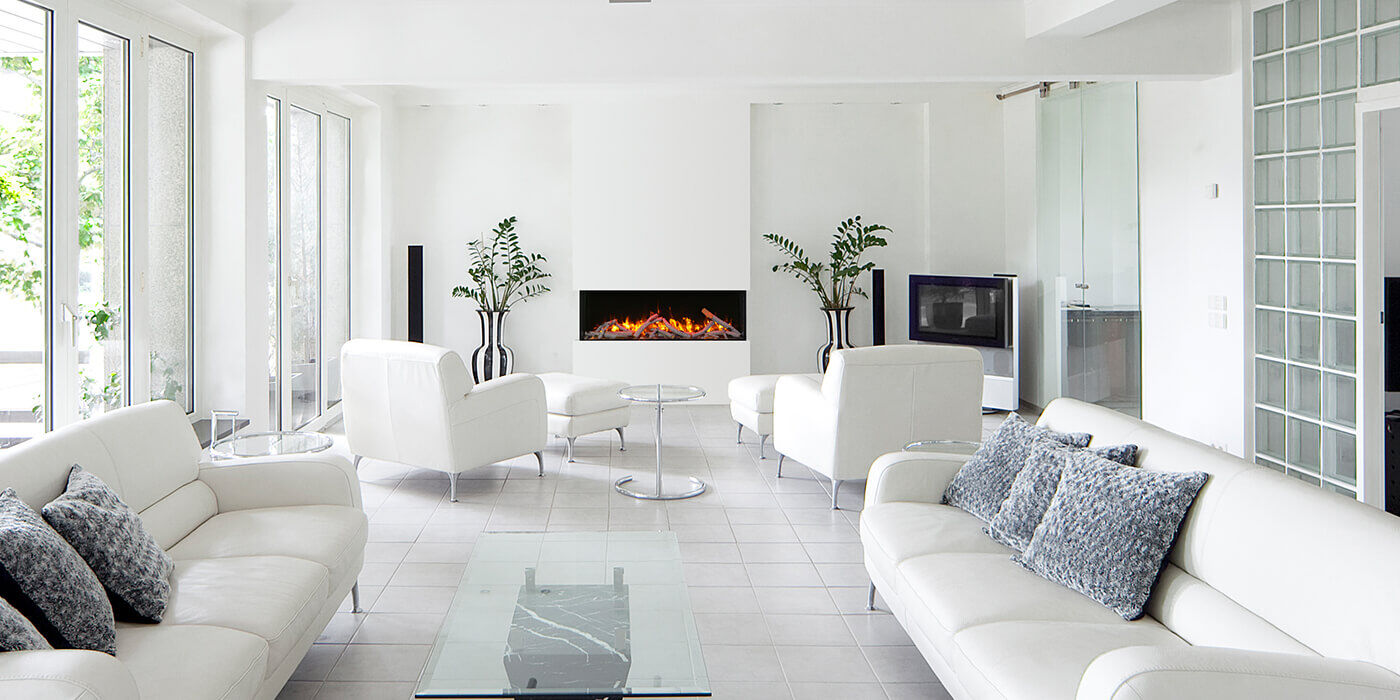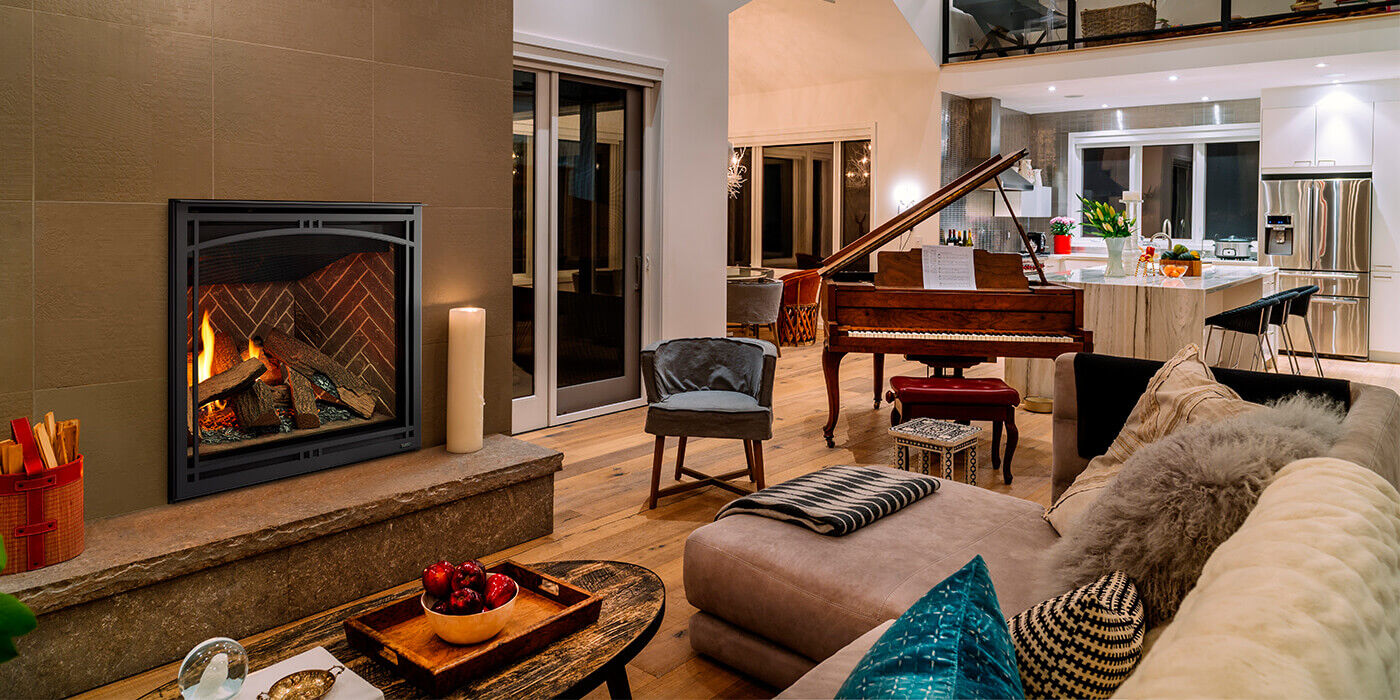By: Thomas Kearney, NFI Certified Master Hearth Professional
Last Updated: November 4, 2025
There’s nothing quite like the warmth and glow of a fireplace. Whether it’s the crackle of burning wood, beautiful gas flames, or the instant ambiance of electric, a fireplace adds comfort and character to your home.
But with that comfort comes responsibility. Practicing proper fireplace safety tips isn’t just about protecting your home — it’s about ensuring your fireplace remains a safe and enjoyable centerpiece for years to come.
This guide covers essential home fireplace safety practices for wood burning, gas, and electric fireplaces. Even if you’ve been using fireplaces for years, a quick safety refresher can make all the difference.
Wood Burning Fireplace Safety
Wood burning fireplaces are timeless, offering the sound, scent, and ritual of stacking logs. But wood fires require extra care to ensure safe fireplace use.
Schedule Annual Chimney Inspections & Cleanings
According to the National Fire Protection Association, three of every 10 house fires caused by home heating are due to poorly maintained fireplaces and dirty chimneys.
Creosote buildup is one of the biggest hazards of wood burning fireplaces. This sticky, highly flammable residue accumulates inside your fireplace over time, increasing the risk of a chimney fire.
Be sure to schedule professional inspections once a year. A professional chimney sweep can clean your chimney flue, fireplace, and components. They’ll check for cracks, obstructions, or nesting animals that could post fire hazards.
Burn Seasoned Wood Only
You’ll need seasoned, dry wood for the best and safest burning experience. Green or wet wood produces more smoke, more creosote, and less heat.
Seasoned hardwoods — like oak, maple, hickory, and birch — are denser and heavier than softwoods such as pine or spruce. That density means they contain more energy per log, producing a hotter, steadier fire that lasts much longer. This makes hardwoods ideal for heating your home and maintaining consistent warmth through the night.
The most common hardwoods including oak, maple, or birch. The exact drying time will vary, depending on the type of wood you have. Generally, you can expect to wait about six months for hardwoods to completely dry out.
Avoid burning trash, cardboard, or treated wood — they release harmful chemicals and can spark dangerous flare-ups.
Read more: How (And Why) to Season Your Firewood — Ultimate Guide
Use a Fireplace Screen
A sturdy safety screen prevents sparks or embers from escaping into your living space.
This simple barrier can stop small accidents before they become big problems.
Keep Combustibles Far Away
Furniture, rugs, curtains, decorations, and other flammable materials should be kept a safe distance away from the fireplace opening. Even radiant heat can ignite nearby items if they’re too close.
Follow the manufacturer’s instructions in your fireplace owner’s manual. It will tell you the exact clearance requirements you need to follow.
Never Leave a Fire Unattended
Always supervise an active fire — and make sure it’s completely out before heading to bed or leaving the house.
When in doubt, stir the ashes and feel for heat to ensure there are no lingering embers.
Install Smoke & Carbon Monoxide Detectors
Every home with a fireplace needs working smoke alarms and carbon monoxide detectors.
Test them monthly and replace the batteries at least once a year.
Gas Fireplace Safety
Gas fireplaces offer clean heat and effortless control, but they still require regular maintenance.
Whether you have a Direct Vent fireplace, Ventless fireplace, or gas log set, follow these safety precautions to keep things running smoothly.
Schedule Annual Inspection & Service
A qualified technician should inspect your gas fireplace once a year. They’ll check the gas lines, valves, pilot light, and ignition system to ensure everything is safe and efficient.
Even small leaks or clogs can lead to serious safety issues if left unchecked.
Keep the Glass Clean — But Handle with Care
The glass on a gas fireplace can reach over 400°F during use. Allow at least 30–60 minutes for it to cool before touching or cleaning it.
Use only manufacturer-approved glass cleaner and a soft cloth.
Watch for Gas Leaks
If you ever smell gas (a rotten-egg or sulfur-like odor), turn off the fireplace immediately, open windows, and leave your home.
Do not use switches or appliances. Call your gas provider or fire department once you’re safely outside.
Maintain Proper Ventilation
For Direct Vent models, make sure the exterior vent cap remains clear of snow, leaves, or debris.
Poor airflow can cause carbon monoxide buildup or affect flame quality.
Keep Kids & Pets at a Safe Distance
Even though gas fireplaces don’t produce sparks, the glass front and surrounding metal can become dangerously hot.
Use a safety gate or barrier if you have children or pets in the home.
Electric Fireplace Safety
Electric fireplaces are often praised for their safety and simplicity, but they still require mindful use. Here’s how to ensure your home fireplace safety when enjoying an electric model.
Plug Directly into a Wall Outlet
Never use an extension cord or power strip for your electric fireplace. These units draw significant power and can overload circuits or cause overheating.
Always plug your electric fireplace directly into a properly grounded outlet.
Keep Air Vents Clear
Electric fireplaces use internal fans to circulate warm air. Dust, pet hair, or blockages can cause overheating or reduce efficiency.
Vacuum vents and grilles regularly to maintain proper airflow.
Don’t Leave It Running Unattended
Even though there’s no real flame, it’s best practice to turn off your electric fireplace when you leave the room or go to sleep.
Use built-in timers or remote shutoffs for extra peace of mind.
Keep Liquids & Flammables Away
Avoid placing drinks, candles, or other items on or near your electric fireplace.
Liquids can cause electrical shorts, while decorative fabrics or materials may overheat if placed too close to the vent.
Inspect the Cord Regularly
If you notice fraying, cracking, or scorch marks on the cord or plug, discontinue use immediately and replace the damaged part or contact the manufacturer.
General Home Fireplace Safety for Every Type
No matter what kind of fireplace you own, some rules apply universally to safe fireplace use.
Keep a Fire Extinguisher Nearby
Every fireplace area should have a Class A, B, and C-rated fire extinguisher within easy reach. Know how to use it (remember: Pull, Aim, Squeeze, Sweep).
Establish a Safe Zone
Create a “no-go” zone at least three feet around your fireplace where kids and pets aren’t allowed. Consider marking the space with a hearth rug or barrier.
Stay Alert to Warning Signs
Flickering gas flames, excessive smoke from a wood fire, or a strange burning smell from an electric unit all signal something’s wrong. Shut off the fireplace and call a professional before using it again.
Educate Everyone in the Home
Make sure all household members know how to operate the fireplace safely and what to do in case of emergency.
Practice Seasonal Maintenance
At the start and end of each heating season, take time to inspect your unit, clean the area, and ensure your detectors are in good working order.
Bonus: Safety Accessories That Help
- Fireplace tools: Use tongs or pokers instead of hands for adjusting logs.
- Hearth rugs: Protect floors from sparks and embers.
- Glass doors: Provide both style and protection.
- Carbon monoxide alarms: An absolute must for all fuel-burning fireplaces.
- Surge protectors: For electric fireplaces, they can help guard against electrical spikes.
Summary
A fireplace brings warmth, beauty, and comfort—but it also brings responsibility. Whether you love the ritual of a wood fire, the convenience of gas, or the simplicity of electric, following these fireplace safety tips ensures that your cozy moments stay safe ones.
Taking the time to learn and practice home fireplace safety protects not just your home, but the people and memories inside it.
FAQs
Once a year is the general rule. Wood burning fireplaces need annual chimney cleaning, while gas and electric units should be checked annually by a technician to ensure components are working properly.
No. Even though gas and electric fireplaces are safer than open fires, it’s best practice to turn them off when you go to bed or leave the house. Continuous use can increase the risk of overheating or gas buildup.
If you notice black soot on the damper, a smoky smell when not in use, or reduced draft while burning, your chimney likely has creosote buildup. Schedule a cleaning immediately.
When installed and used properly, yes — but they must be operated in well-ventilated rooms and never left unattended. Always follow manufacturer guidelines and use carbon monoxide and smoke detectors nearby.
Allow ashes to cool for at least 24 hours, then place them in a metal container with a tight-fitting lid. Store the container outdoors on a nonflammable surface until ready for ash disposal.
We’re Here to Help
Do you have more questions about fireplace safety? Call our NFI Certified Master Hearth Professionals today at 800.919.1904.
More Resources
Check out our Gas Fireplace Buying Guide to choose the perfect style.
Going for classic and timeless? Explore our top-rated wood burning fireplaces.
Electric fireplaces are safe, affordable, and flexible — find the perfect design in our buying guide.
 |
Tom Kearney has been a Technical Sales Representative at Woodland Direct for over a decade, where he has honed his expertise in gas, wood, and pellet appliances as an NFI-Certified expert. Tom's dedication to customer satisfaction is exemplified by his work with high-profile clients, including assisting SpaceX President Gwynne Shotwell in sourcing five stunning fireplaces for her Texas home. When he's not helping clients find their perfect fireplace, Tom enjoys hitting the golf course, skiing down snowy slopes, and exploring new trails on his bike. Call him or one of our experts in fire at 800.919.1904. |


